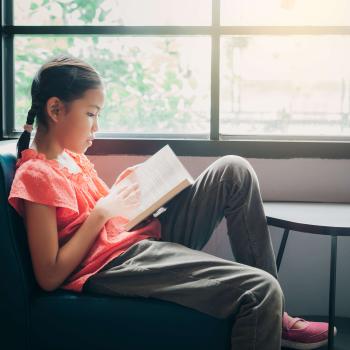Supporting Students As They Read Independently

About this Strategy Guide
Independent reading lets students practice strategies that they learned during the other instructional contexts along the gradual release of responsibility. During independent reading, students read from texts on their independent reading level or texts that are easy enough for them to decode and understand without a lot of effort.
Research Basis
The goals of independent reading are to practice a smoothly operating reading process, to exercise choice, and develop reading interests. Historically, research on independent reading has produced mixed results (Shanahan, 2006; Manning, Lewis, & Lewis, 2010), but literacy leaders attribute this to models of independent reading that have little or no structure. Independent reading that offers guided choice, that teaches children how to select books that are on an appropriate reading level for them, and during which teachers confer with students yields positive results (Kuhn et al., 2006; Moss & Young, 2010). It is critical to maintain the balance between student choice and text demands. Independent reading is often referred to as reading practice, and the ways students interact with texts at this point in the gradual release of responsibility should echo those practiced in read-aloud, shared, and guided reading contexts (Burkins & Croft, 2010).
Strategy in Practice
- Assemble a classroom library. Include multicultural books of various genres and reading levels. Organize and label the books to match the ways in which students should select texts.
- Plan and teach lessons that explicitly show students how to select and care for independent reading books, what their work should look like, and library maintenance procedures. Model, teach, practice, and revisit all procedures. Possible topics for mini-lessons include how to do the following things:
- Select new books
- Manage browsing boxes or other organizational structures
- Decide to abandon a book
- Document your reading
- Follow bathroom procedures during independent reading
- Get blank copies of reading logs and printed materials
- Volunteer to share something from your reading
- Prepare for sharing
- Respond when others share
- Select new books
- Create or collect copies of forms or tools to use when conferring with students. Develop a plan for meeting with all students in one week. Often a combination of regularly scheduled conferences and spontaneous conferences works well. Confer with students to get a sense of their independent reading, or capitalize on this one-on-one time to offer instructional support to students needing individual guidance.
- During the first weeks of independent reading time, stop the sessions before students get distracted, perhaps as soon as five minutes into the first sessions with young children. Gradually, increase the amount of independent reading time, increasing reading stamina.
- While students read, they may record some of these things (not all): book title, number of pages read, or new vocabulary. (See #2.)
- While students read, go to individuals and listen to each read aloud to confirm reading level appropriateness. Engage each student in conversation about the text’s meaning and what he or she likes about it. Also, make notes about how a student solves problems while reading.
- After independent reading, gather the students to talk about their reading. There are myriad ways to engage students around their books, such as meeting in “book clubs” or checking comprehension by having students present commercials to interest others in their favorite books. When possible, let students take books home.
For Further Reading
Allington, R.L. (Ed.) (1998). Teaching struggling readers: Articles from The Reading Teacher. Newark, DE: International Reading Association.
Burkins, J.M., & Croft, M.M. (2010). Preventing misguided reading: New strategies for guided reading teachers. Newark, DE: International Reading Association.
Hiebert, E.H., & Reutzel, D. R. (Eds.) (2010). Revisiting silent reading: New directions for teachers and researchers. Newark, DE: International Reading Association.
Kelley, M.J., & Clausen-Grace, N. (2009, December). Facilitating engagement by differentiating independent reading. The Reading Teacher, 63(4), 313–318.
Moss, B., & Young, T.A. (2010). Creating lifelong readers through independent reading. Newark, DE: International Reading Association.